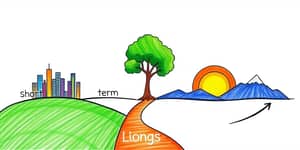
Approaching retirement marks a profound shift in your financial journey. You’ve spent decades accumulating assets; now it’s time to preserve and distribute them wisely.
In this article, we explore expert guidelines and practical steps to help you transition from growth to protection, ensuring you enjoy a secure and fulfilling retirement.
As you near retirement, the primary focus becomes protecting capital. Volatility in equities can jeopardize years of savings if you’re forced to sell after a market downturn.
By reallocating assets toward more conservative instruments, you position yourself for steady income streams for living expenses while maintaining some growth potential.
This balance is critical: you want enough growth to combat inflation but sufficient stability to withstand market swings.
Each asset class plays a distinct role when retirement is on the horizon. A diversified mix helps you diversify across multiple asset classes and manage risk effectively.
Real estate and alternative assets such as REITs can also supplement income and add diversification in later years.
Determining how much to withdraw each year is crucial. While the 4% rule provides initial guidance, many advisors now suggest a more conservative approach in today’s low-yield environment.
Before dipping into equities during a downturn, rely on:
Aligning withdrawals with income sources can prevent selling long-term assets at unfavorable times and help you preserve wealth for future needs.
Markets move, but your risk tolerance and time horizon remain steady. Schedule regular reviews—annually or semi-annually—to rebalance your portfolio.
Unless your financial goals or circumstances change dramatically, avoid reacting to short-term market swings. Target-date funds or lifecycle funds automate this process, gradually shifting allocations as your retirement date approaches.
Retirees face unique risks:
Maintaining a measured growth component can mitigate longevity risk, while a substantial cash buffer safeguards against market fluctuations.
Effective tax planning enhances the longevity of your savings. Structure withdrawals in this sequence:
Begin Roth conversions before Required Minimum Distributions (RMDs) trigger higher tax brackets, and maximize catch-up contributions once you hit age 50.
As retirement draws near, the complexity of drawdown strategies, tax rules, and health care costs can justify professional advice. A certified financial planner can tailor a plan to your unique needs.
For do-it-yourselfers, low-cost index funds or target-date funds, combined with disciplined rebalancing, can provide a robust framework—if you remain vigilant and avoid emotional reactions.
Consider Jane, age 58, with a balanced portfolio of 70% stocks, 25% bonds, and 5% cash. By age 65, she reduces equities to 55%, increases bonds to 40%, and builds cash reserves to 5%.
At age 75, Jane shifts to 35% stocks, 55% bonds, and 10% cash, creating a steady stream of income while retaining growth potential. By 85, she holds 15% stocks, 50% bonds, and 35% cash, prioritizing liquidity and capital preservation.
This deliberate, phased approach illustrates how you can maintain balance, meet expenses, and adapt to changing market and personal conditions.
Transitioning from accumulation to distribution requires thoughtful planning, discipline, and periodic adjustments. By aligning withdrawals with income streams, managing risk, and leveraging tax efficiency, you can help ensure your lifetime savings supports the retirement you’ve envisioned.
Your portfolio is not static—keep it dynamic, review it regularly, and adjust allocations to suit your evolving needs and goals.
References













